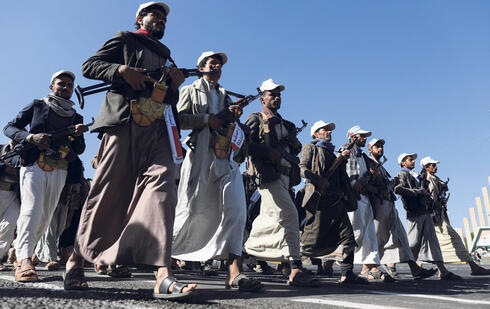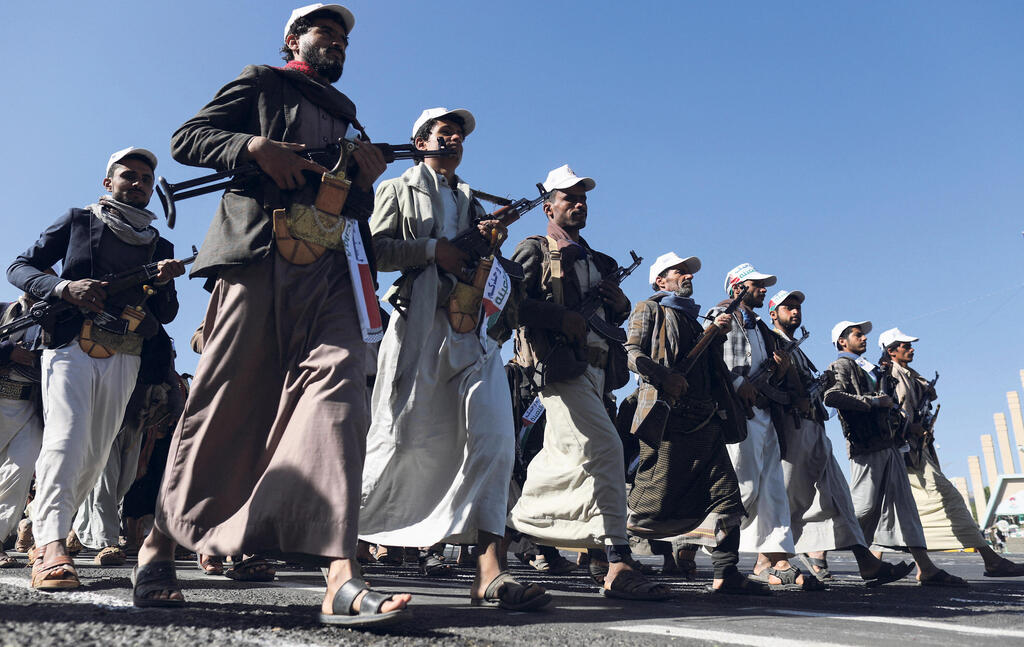
Are the global underwater communication cables the next target of Houthi terrorism?
The Yemeni terrorist militia has yet to directly threaten attacks against the internet infrastructures connecting the East and the West, but there are concerns that they could attempt to damage the international communication cables laid on the seabed of the Bab al Mandab Strait
The war imposed on Israel as a result of the terrorist attack by Hamas on October 7 has unleashed an arsenal of global security threats, the likes of which the Western world has never previously seen. The terror that the Houthis, an armed militia from Yemen supported by Iran, exert on ships traversing the world trade routes is the most striking example. However, new fears have arisen regarding a potential terrorist attack on submarine cable infrastructures that connect the East to the West.
At the beginning of the week, reports were published on social media indicating that the armed Yemeni terrorist militia is threatening to damage the international communication cables laid on the seabed of the Bab al Mandab Strait, an area under their control. According to the reports, one of the Houthi leaders threatened that, in light of the international coalition forming to protect the free movement of ships in the Bab al Mandab area, they could "return the West to the Stone Age." The reports referred to a speech published on the Houthis' Ansarollah website about the military developments in the region, where threats were heard against the Western countries mobilized to protect maritime trade.
Beyond the vague sentence in the speech and its militant interpretations on social networks, no other specific statement was made that constitutes a direct threat of Houthi terrorism to the international underwater communication cables. However, even if the Yemeni terrorist militia did not intend to directly threaten the internet infrastructures connecting the East and the West, the concern raised is understandable and legitimate.
The vast majority of communication in the world today is carried out using underwater cables. More than 95% of international communications (voice and data) travel through underwater cables. Over 800,000 kilometers of underwater communication cables are laid on seabeds around the world, ensuring the ability of the world's citizens to communicate in the global era. These cables are mostly composed of optical fibers, which transmit information at a rate equal to approximately one hundred and fifty million telephone calls simultaneously.
Like the trade routes above sea level, the deployment of communication cables in the region is one of the most important and busiest axes connecting the eastern part of the earth with the west. Main communication arteries pass through the bottom of the Indian Ocean and the waters of the Arabian Sea from India, along the coasts of the Arabian Peninsula to the Red Sea and the Suez Canal on their way to the Mediterranean Sea and the shores of Europe. Nearly 20 different submarine cables drain into the Bab al Mandab strait, a strategic point where the Houthis are in control.
Although it is not easy to reach cables that are hundreds and thousands of meters below sea level and sabotage them, the Houthi militia, supported by the knowledge, technology, weapons, and military training of Iran, has already proven its prowess many times. From hijacking commercial ships, attacking military vessels with suicide drones, to launching long-range missiles hundreds of kilometers away, threatening cities in the south of the State of Israel.
It is estimated that every year about two hundred submarine communication cables are damaged throughout the oceans, with 77% of the damages caused unintentionally as a result of damage from fishing equipment and ship anchors. However, about a third of the damage is apparently caused by intentional activity.
A few weeks before the October 7 attack, the President of the United States, Joe Biden, announced tremendous international cooperation to connect the East to the West with a land bridge starting in India, passing through Saudi Arabia and Israel to Europe and the United States. This land corridor, designed to bypass maritime shipping lanes, should include the construction of railways and the laying of optical communication fibers, power lines, and other infrastructure. Such an infrastructure is supposed to be a terrestrial alternative to submarine cables, the access to which is complex and expensive.
Already at the beginning of the decade, the technology giant Google announced that it had begun planning and building an optical fiber network to be laid through a submarine and land cable between India and Europe. To bypass the maritime section in the Yemen region, Google plans to lay the cable in Saudi Arabia and Israel, avoiding transmitting communications through the Suez Canal, where there are already several cables, or through regions characterized by political instability such as Yemen, Syria, Iraq, and Turkey.
In an article published in June 2023, Rear Admiral (Res.) Yuval Eylon, a researcher at the Institute of the Israeli Institute for National Security Studies INSS, stated that although intentional damage to underwater communication cables is not a new phenomenon, the damage by terrorist organizations or pirates has been gaining momentum in recent years. Among other things, there is mention of damage by Vietnamese pirates in 2007 to a ship that installed underwater communication cables, theft of optical amplifiers laid along the cable, resulting in the shutdown of the cable for seventy-nine days, and cutting of underwater communication cables as a terrorist act near the Egyptian coast in 2013. In addition, there is the use by countries, mainly superpowers, to connect to the communication cables of other countries to steal information passing through these cables.
Eylon, who mainly analyzed the threats to submarine cables in Israel's territorial waters, proposes to divide them not only according to the traditional division derived from the activities of terrorist organizations, states, and powers, but also according to the depths because the capabilities and means available to states can be used by all the "players." Among other things, he mentions the use of dwarf submarines that reach depths of up to 200 meters and can be used by armies or "semi-state" terrorist organizations (such as the Houthis). In addition, unmanned diving vessels that can reach depths of 5,000 meters below sea level exist in the hands of countries and terrorist organizations such as the Houthis.
According to him, at the same time as the increase in the volume of submarine cable deployment, underwater capabilities have developed for additional purposes: tiny unmanned submarines for long-range operation, remote-controlled underwater robots, and other capabilities, which on the one hand support these infrastructures and on the other hand pose a threat to damage, sabotage, or any other manipulation of underwater infrastructure. Such an action, if it were to occur, could severely damage Israel's international communication capacity and expose it to many security risks due to the disclosure of the information passing through this infrastructure.
Eylon emphasizes that the concept of protecting mobile above-water marine infrastructures such as ships and point infrastructures (gas rigs, for example) has been researched and answered in other places in the world. However, the practice of protecting underwater transmission infrastructures is in its infancy in the whole world in general and in the State of Israel in particular. The rate of progress in the development of threats makes it necessary to define them and to develop the perception the capabilities to deal with them.















